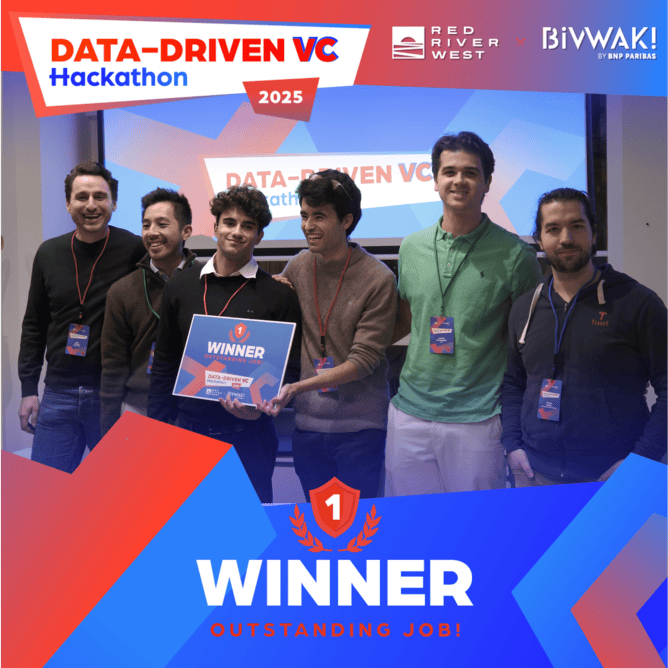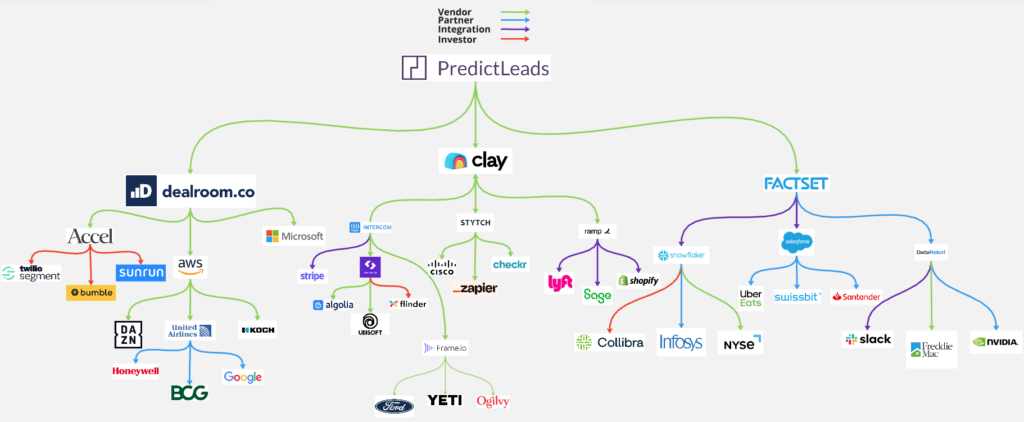PredictLeads Similar Companies Dataset identifies companies that closely resemble another company. This is done based on domain patterns, digital presence, and behavioral signals. This makes it a powerful engine for targeting, prioritization, and market mapping. Using the Similar Companies Dataset for targeting and market mapping ensures precise alignment with business goals.
Below are ten practical applications of the Similar Companies Dataset for targeting and market mapping.
1. Build High-Precision Lookalike Lists
Teams can generate lookalike targets based on actual similarity, not guesswork, effectively utilizing the dataset to conduct similar companies targeting and market mapping. This improves targeting accuracy and reduces time spent on low-fit accounts.
2. Strengthen Ideal Customer Profile (ICP) Development
By examining similarity clusters around top customers, teams can better define what a strong-fit company actually looks like, backed by data rather than opinion, aiding similar companies targeting and market mapping efforts.
3. Improve Lead Scoring and Prioritization
A high similarity score can be used as a ranking factor. Leads that resemble existing best customers automatically surface to the top, leveraging a similar companies dataset approach for market mapping and effective targeting.
4. Identify New Market Segments
Similarity patterns often reveal adjacent groups of companies teams may not be monitoring. This helps GTM teams explore new verticals or sub-segments with lower risk, thanks to the insights from a similar companies dataset.
5. Fuel Account-Based Marketing Campaigns
ABM works when target lists are highly focused. Lookalike companies help build Tier 1, Tier 2, or Tier 3 account lists that mirror winning customer profiles, benefiting directly from a similar companies dataset used in market mapping.
6. Accelerate TAM and Market Mapping
Similarity clusters provide a quick way to understand how a market is structured. Companies that group together often share needs, tools, and workflows. This enhances targeting strategies with similar companies datasets applied for effective market mapping.
7. Improve Competitive Research
Teams can analyze which companies resemble a key competitor and identify emerging entrants or indirect competitors that share similar characteristics, utilizing a similar companies dataset for better mapping of the market landscape.
8. Support Product-Led Growth Targeting
PLG teams can identify companies similar to their most active or highest-converting users; as a result, they can more effectively target those accounts for activation, onboarding, or upsell campaigns. Additionally, the Similar Companies Dataset becomes a crucial element in this broader market strategy.
9. Surface High-Potential Accounts Overlooked in CRM
Many strong prospects never get touched simply because they do not fit old filters. Lookalike analysis can reveal accounts hiding in plain sight, which can be targeted effectively using a similar companies dataset for precise market mapping.
10. Help Investors Find Deals Faster
VCs and investors can generate lookalikes for any strong-performing portfolio company. This produces instant deal pipelines of companies with similar traits and traction signals through the innovative use of a similar companies dataset targeting market dynamics.
Get started with the PredictLeads Similar Companies Dataset and unlock powerful insights for sales, marketing, GTM, and investment teams.
The dataset curently covers 18.5+ million companies and draws from all PredictLeads datasets, giving you a unified view of similarity based on real digital and behavioral signals.
Explore the full documentation here:
https://docs.predictleads.com/guide/similar_companies_dataset








